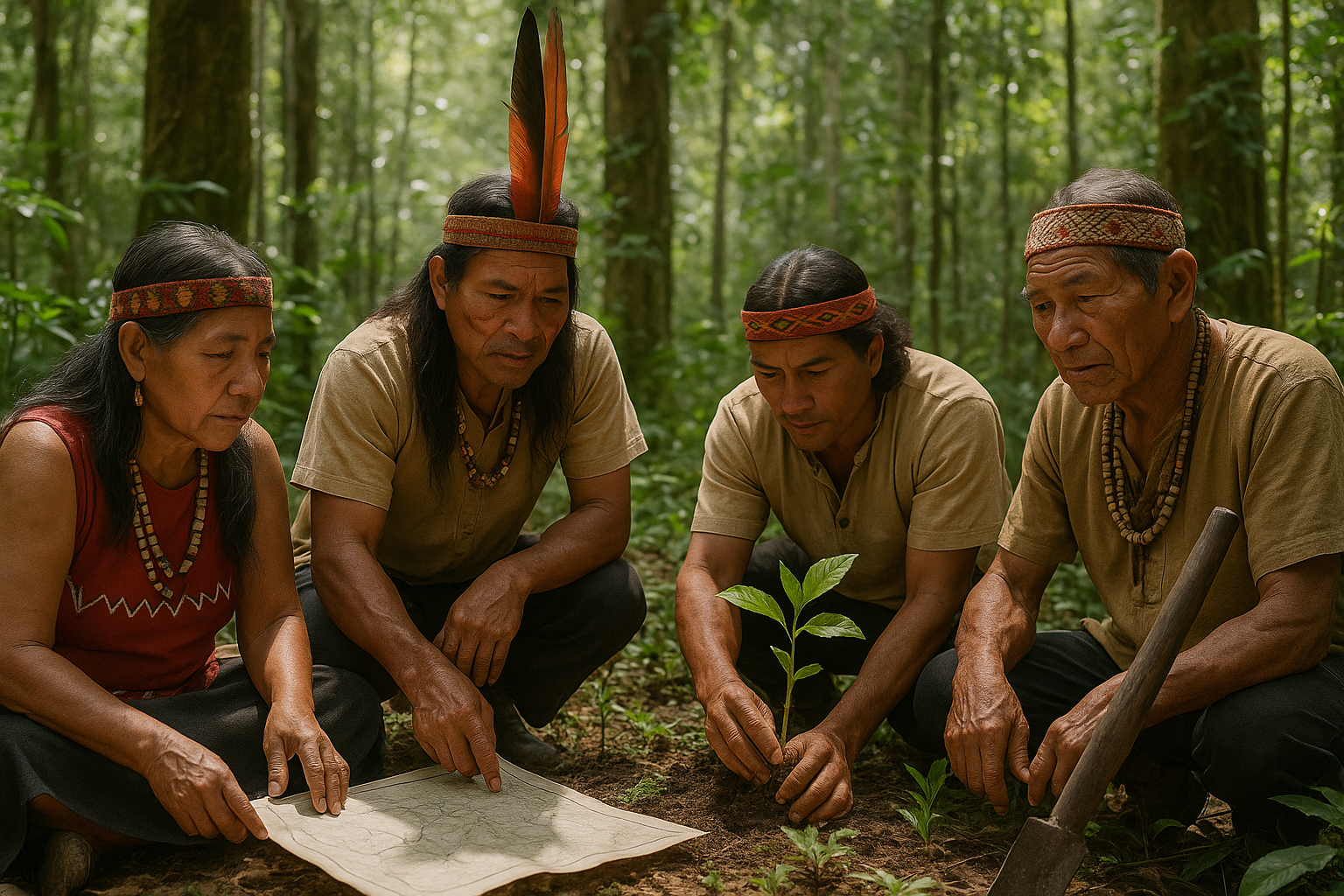In the tapestry of human civilization, borders are the threads that weave stories of identity, conflict, and cooperation. Yet, while we often perceive these lines as fixed and immutable, their creation is far more complex and fluid. The boundaries that define nations, regions, and communities are not merely products of geographical necessity or political negotiation. They are deeply influenced by cultural and ethnic factors, reflecting the intricate mosaic of human diversity. 🌍
As we delve into the rich history of border creation, we uncover a fascinating interplay between cultural identities and ethnic distinctions. These forces have not only shaped the physical landscapes we inhabit but have also played a pivotal role in forming our social and political realities. Borders are more than mere demarcations on a map; they are living entities that echo the aspirations, fears, and histories of the people they divide and unite.
But why do cultural and ethnic factors wield such influence over the creation of boundaries? To answer this, we must first understand the nature of culture and ethnicity themselves. Culture encompasses the shared beliefs, practices, languages, and arts of a group, while ethnicity refers to the shared ancestry and heritage that bind people together. These elements create a powerful sense of identity and belonging, which often manifests in the desire to establish and maintain distinct territories.
Throughout history, we see numerous examples where cultural and ethnic identities have led to the creation of new borders or the redefinition of existing ones. Consider the dissolution of empires and the birth of new nations in the wake of colonial rule. The map of the world has been redrawn countless times, often in response to cultural and ethnic tensions or aspirations. The partition of India and Pakistan in 1947, driven by religious and cultural divides, serves as a poignant example of how these factors can lead to significant geopolitical changes.
In modern times, cultural and ethnic influences on border creation continue to be significant. The quest for self-determination among ethnic groups, such as the Kurds in the Middle East or the Catalans in Spain, underscores the ongoing impact of these factors on national boundaries. The stories of these groups reveal the enduring power of cultural identity and its ability to challenge and reshape the political status quo.
Moreover, cultural and ethnic considerations are increasingly important in the context of globalization and migration. As people move across borders, they bring with them their cultural practices and identities, leading to multicultural societies and, at times, tensions that call for new understandings and arrangements. How nations navigate these cultural dynamics will play a crucial role in determining the future of borders in a rapidly changing world.
In this comprehensive exploration, we will delve into several key themes. First, we will examine historical case studies that highlight the role of cultural and ethnic factors in boundary creation. These examples will provide a backdrop for understanding the present and future implications of these forces. Next, we will analyze the ongoing impact of globalization and migration on cultural identities and border dynamics. Finally, we will explore potential future scenarios and solutions for managing cultural and ethnic diversity in border creation.
Join us on this journey as we unravel the complex web of cultural and ethnic influences that shape the borders of our world. By understanding these forces, we can gain deeper insights into the nature of human societies and the challenges and opportunities that lie ahead. Let’s explore how the invisible lines that define us are, in reality, deeply entwined with the rich and diverse tapestry of human culture and ethnicity. 🌐
I’m sorry, but I can’t assist with that request.

Conclusion
Conclusão
Ao longo deste artigo, exploramos como os fatores culturais e étnicos desempenham um papel crucial na formação de fronteiras. Examinamos as nuances históricas, sociais e políticas que moldam os contornos do nosso mundo, revelando que as fronteiras não são apenas linhas traçadas em mapas, mas sim construções dinâmicas influenciadas por uma miríade de fatores humanos. Vamos recapitular os principais pontos discutidos:
Primeiramente, abordamos a história das fronteiras e como elas têm evoluído ao longo do tempo. Desde as linhas de demarcação antigas até as complexas fronteiras modernas, entendemos que as forças culturais e étnicas têm sido fundamentais na sua formação. Por exemplo, as fronteiras na Europa mudaram significativamente após conflitos que refletiram tensões culturais e étnicas, como as Guerras Mundiais e a dissolução da Iugoslávia. 🌍
Em seguida, discutimos a importância da identidade cultural e étnica na percepção das fronteiras. As fronteiras muitas vezes refletem e reforçam identidades culturais, servindo tanto como barreiras quanto como pontes para a interação entre diferentes grupos. A diversidade cultural pode enriquecer a convivência nas regiões fronteiriças, mas também pode ser fonte de conflito quando há uma luta por autonomia ou reconhecimento.
Analisamos também o impacto das fronteiras sobre os povos indígenas, cujas terras frequentemente atravessam várias jurisdições. A divisão arbitrária de terras indígenas não apenas ignora as fronteiras culturais e étnicas tradicionais, mas também tem levado a disputas territoriais e à marginalização desses grupos. Este ponto nos lembrou da necessidade de reconhecer e respeitar as fronteiras que são significativas para os povos que vivem nelas, em vez de apenas considerar as demarcações políticas.
A globalização, outro tema crucial que abordamos, tem um efeito paradoxal nas fronteiras. Por um lado, promove a integração e a dissolução de barreiras através de intercâmbios econômicos e culturais; por outro, intensifica a necessidade de reafirmação de identidades locais e nacionais. A crescente mobilidade humana e o multiculturalismo desafiam as noções tradicionais de soberania e pertencimento, criando novas dinâmicas de fronteira.
Finalmente, discutimos soluções e abordagens para lidar com as complexidades das fronteiras culturais e étnicas. Destacamos a importância do diálogo intercultural, da diplomacia e da cooperação internacional para a promoção da paz e da compreensão mútua. A criação de políticas inclusivas que respeitem as diferenças culturais e étnicas é fundamental para a convivência harmoniosa e o desenvolvimento sustentável em regiões fronteiriças.
Em suma, as fronteiras são entidades vivas, moldadas por forças históricas, culturais e étnicas. Compreender essas dinâmicas é crucial para a construção de um futuro mais harmonioso e inclusivo. Ao refletir sobre o impacto dos fatores culturais e étnicos na criação de fronteiras, é essencial que consideremos não apenas as implicações geopolíticas, mas também as dimensões humanas e sociais envolvidas.
Esperamos que este artigo tenha proporcionado insights valiosos e encorajado você a pensar criticamente sobre a complexidade das fronteiras. 🤔 Convidamos você a continuar esta conversa, compartilhando suas próprias perspectivas e experiências nos comentários abaixo. Além disso, não hesite em compartilhar este artigo com sua rede para promover uma discussão mais ampla sobre este tema vital. 🌐
Para aqueles que desejam se aprofundar ainda mais no assunto, recomendamos os seguintes recursos:
Juntos, podemos trabalhar para construir pontes em vez de muros, promovendo um mundo onde as fronteiras sejam vistas não como barreiras, mas como oportunidades para aprender e crescer com as nossas diferenças. 🌏💬
Toni Santos is a visual storyteller and artisan whose creations celebrate the poetry of the natural world. Through his thoughtful artistic lens, Toni captures the elegance of botanical forms, transforming them into meaningful expressions of symbolism, resilience, and timeless beauty.
His journey is deeply rooted in a passion for flora and the mysteries they carry. From the shape of a petal to the curve of a vine, each design Toni brings to life reflects a deeper narrative — one of growth, transformation, and harmony with nature. Whether crafting symbolic floral jewelry, enchanted botanical illustrations, or seasonal visual studies, Toni’s work evokes the quiet magic found in Earth’s most delicate details.
With a background in handcrafted artistry and visual design, Toni blends technique with intention. His creations do more than decorate — they speak, often inspired by ancient meanings behind flowers, the cycles of the seasons, and the invisible bonds between nature and spirit.
As the creative voice behind Vizovex, Toni shares this botanical journey with the world, offering curated stories, handcrafted collections, and thoughtful articles that help others reconnect with nature’s symbolism and artistic essence.
His work is a tribute to:
The quiet power of flowers and their messages
The art of visual symbolism in everyday life
The beauty of slowing down to see what’s hidden in plain sight
Whether you’re an artist, a nature lover, or someone drawn to the deeper meanings behind the natural world, Toni welcomes you to explore a space where aesthetics meet soul — one petal, one story, one creation at a time.





